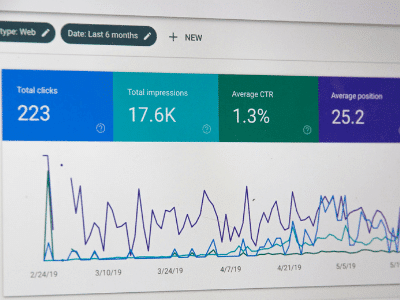The rise of social media over the last two decades is undeniable. Although it generated at times heated privacy discussions and some negative press, it’s certainly proven beneficial to businesses.
Social media has become a powerful tool in any company’s marketing plans. It can help promote your website and share information with your customers in real-time. When done well, social media is an important interactive tool and can support your brand’s message. Ideally, it will make your website stick out to potential and existing customers and generate business.
Why you should promote your website on social media

It is important to acknowledge that whatever industry you are in and whichever digital and traditional channels you use, your focus has to truly be on your customer. This means understanding your customer and delivering the best possible experience and service. And that includes your social media communication.
Promoting your website on social media allows you to substantially expand your business’ reach. According to a July 2021 report by Genroe Australia, 33% of Australians use social media when searching for information about a brand. The numbers are even more convincing if you look at the global stats. A whopping 57% of the global population are social media users according to DataReportal.com. That’s 4.48 billion people your business can potentially reach.
What are the benefits of social media in business?
With these user numbers in mind, let’s look at some of the advantages of using social media to promote your website. It can help your business with:
– Easy and fast communication with your potential and existing customer base.
– Increasing your market reach beyond geographical boundaries or time zones
– Attracting new customers and build customer loyalty, creating a following
– Giving you insightful customer feedback and thus helping with valuable market research, improve the way you do business, and reducing marketing costs. It’s also an awesome way to crowd-source new and innovative ideas.
– Increasing the traffic to your website, which in turn will improve your site’s SEO (search engine) ranking
– Developing your brand. What does your business stand for? What are your values? It’s also an opportunity to ‘put a face to a name’, introduce some of your staff for example.
– Attracting and recruiting skilled staff and showcasing your company culture.
So how does social media work for a business?
In short, using social media well to promote your website is a good opportunity to help increase your business’ revenue.
Whether it be the launch of your new website or increasing traffic to your existing pages, using social media as part of your marketing and communications strategy gives you the means to guide potential and existing customers to your website.
All communications and interactions on your chosen social media platforms will be designed to create interest and ultimately lead customers to your business.
How to promote your website on social media
It is important to acknowledge that whatever industry you are in and whichever digital and traditional channels you use, your focus has to truly be on your customer.
This means understanding your customer and delivering the best possible experience and service. And that includes your social media communication.
There are a few simple strategies and tricks that will link your social media efforts to your website and help guide your customers to your business.
How to create a social media plan for your business
As with so many things, it’s always good to have a plan. This is no different when it comes to social media. What is your goal, what do you wish to achieve with it? What social media platforms are best suited to your business? What is the competition doing? What’s your approach and strategy?
Who will be responsible for social media posts and how much time and budget will you assign to it? What will success look like and how will you measure it?
These are some of the questions you should ask yourself as part of your marketing and comms strategy, definitely before you launch your social media presence.
It will give you a long-term framework and timeline to work with and will prevent wasting valuable time and money in the long run.
Start with your website
– Place social media icons on your website. This will give you an instant link to your regular communication on your chosen platform(s).
– Display social media feeds on your website. This will ensure a cohesive message and is an easy and quick way to get news or product information out effectively.
– Especially if you are launching a new website, social media will be a great tool to announce this with fanfare.
Create social media profiles for your business
Do you know your TikTok from your YouTube? There’s an increasing range of social media platforms available, most with an everchanging user profile and all with a broad, global reach.
The most common are Facebook for business, Instagram, YouTube for business, Twitter, LinkedIn, Snapchat for business, Vimeo, and new contender TikTok.
What’s the best social media app for my business?
Through using social media for your business, you essentially become a storyteller. How you want to tell this story, and what audience you wish to reach will be determining factors in choosing your social media platform.
Don’t spread yourself too thin. Go to where your audience is and choose two to three that fit your target market. Here’s a short description of the most common ones.
Facebook for business: What started out as THE platform for teens and tweens, its demographic has shifted to a more mature audience.
Still, FB has the largest audience globally. It is easy to create a business page, form target groups, post photos, videos, and content.
It’s a valuable platform to interact with your customers, get feedback and boost traffic to your website. Although, as Facebook continues to evolve you can expect you’ll need to invest in advertising to reach more of your audience.
Instagram: This is a very visual platform, perfect for stores, designers and craftspersons, or restaurants for example; businesses that do well with visual, photo, or video advertising.
Instagram also holds one of the highest engagement rates, 58% higher than Facebook. The use of hashtags may help you refine and reach your target audience and you can easily link up to your FB posts.
The largest portion of Instagram users is in the 19 – 29 age bracket.
Twitter: The 280 character limit keeps tweets snappy and to the point.
Twitter launched the use of hashtags and their use can guide your users to follow a specific topic. It’s a great tool for shareable content, breaking news, and industry updates.
Twitter continues to face a decline in overall engagement and usage in Australia, with many brands no longer choosing to stay active. 36% of users are aged 18-29 years of age.
LinkedIn for business: Mainly used as a professional network platform,
LinkedIn is the right platform to use to offer business insights and innovations, professional opinions, and trend pieces.
It’s the right place to showcase company culture both to your customers and potential staff. The audience on this platform in Australia typically is 25-34-year-olds.
YouTube for business: This is a well-established and widely used platform globally to share videos. It works really well for ‘how-to’ videos, educational content, or product demonstrations for example.
Content is super easy to upload, use, and share. The length of your video will be influenced by the attention span of your target market but of course also by how much in-depth detail you want to provide.
YouTube will also host short adverts which will play to viewers ahead of the actual video. Based on Royal Morgan Research, YouTube also is weighted towards younger generations
TikTok
The newest social media channel on the block to gain millions of users in record time is TikTok. Similar to Snapchat, short stories or vertical videos are the rage on this platform.
This format works well with their largest demographic of 13-17-year-olds.
Brands have started to embrace the platform including by sponsoring storytellers to tell their story. However, for many businesses in Australia due to the lower age demographics – this short-term mobile video content platform won’t be their highest priority yet.
Promoting your new website on social media
So you’ve chosen the social media platforms that best suit your business and your audience. You’ve joined the networks, ideally set up consistent usernames and profiles, added your company logos, filled in your ‘about’ section, and added the relevant social media icons to your website. Now it’s time to:
– Announce the launch of your new website, or
– Promote your website and business on your chosen social media networks, and
– Increase your website traffic from social media
To help you achieve this, why not:
– Create a customer competition or a contest, marketed only on social media
– Find out what’s trending and use popular hashtags wisely and liberally
– Build anticipation and buzz by releasing teaser images via social media, even a series of screenshots will work well.
– Release customer testimonials
– Give your customers a “behind the scenes” tour or introduce some of your staff
Related article: How to find out your website traffic, and what to do to improve it
Engaging with your audience

Your storytelling has the power! Not only is it important to think about what message you want to send your audience, but you also want to make sure you send it at the right time, and it reaches the right people. Developing a brand, building your following, and boosting your audience should ideally go hand in hand.
Social media is an open invitation to have conversations with your customers, not just to feed them information, but to actively listen.
Use this tool wisely because it can give you new insights into your demographic, it might influence the products and services you offer.
To give you an example of how it’s done well, go and google Nadia Lim. Nadia is a chef, cookbook author, entrepreneur, and co-founder of “My Food Bag” in New Zealand.
Her website is engaging, personal and fun, and full of recipes. Alongside that, she’s also developed quite a social media following. She’s active on Instagram, Facebook, and YouTube. She’s successfully using Facebook to post news and ideas, but also asks her audience to share their favourite recipes. Instagram is a visual feast and YouTube is used for more hands-on, show-and-tell cooking classes.
Everything links back to her website, the messaging is consistent – and her recipes are absolutely delicious!!
Plan for the long game – stay consistent but prepare for change
Give your marketing strategy some thought before you dive into social media for business. Analyse which platforms are best suited to your businesses but also your capacity to keep these up to date and have them look professional and engaging.
It is hard to undo your online footprint. It’s also important to understand your responsibility to ensure content is accurate and not misleading.
Consistency is key
Yup, it’s that simple. Everything you do and say and publish, should slot in nicely with your overall marketing strategy and support your business in all the right ways.
– Be consistently professional and approachable
– Make sure you always use correct branding
– Always keep your customer at the heart of everything you do.
– Ensure your information is consistent and correct across all platforms
– Link all your social media back to your website to maximise traffic
Sometimes, the best-laid plans….
Be prepared to pivot according to what your audience responds to the most.
You feel you’ve got your marketing plan down pat, your market segmentation is spot on and you know exactly what your competition is up to. You’ve got your finger on the pulse. And yet, every now and then, your customers will throw you a curveball and respond in ways you never thought of.
That is a good thing! It shows your customer base is engaged. It means you now have data to base business decisions on. So be prepared to listen to your followers and change tack every now and then.
Successful website promotion on social media – the next steps
We hope you find this post valuable, and it has given you some ideas on how to use social media to promote your business.
We also want to reiterate that social media marketing is just one part of the puzzle, there are many other factors that influence the success of an online business.
You will never be alone on this journey though. LYF Solutions® will walk alongside you and your business. We are passionate about using our expertise and knowledge in digital marketing, web design, and social media.
We can help small businesses and start-ups with engaging content and quality communications to achieve measurable and successful outcomes.

















